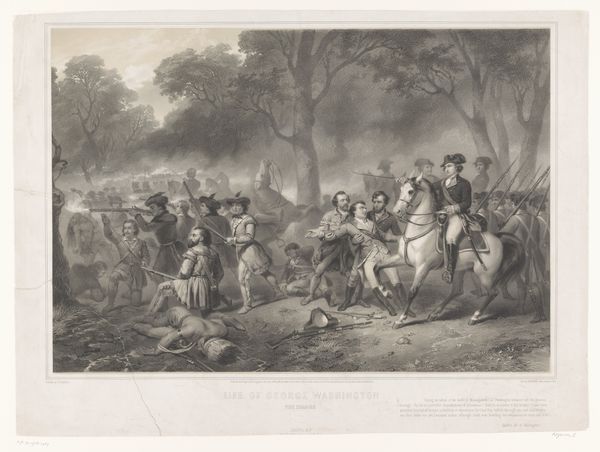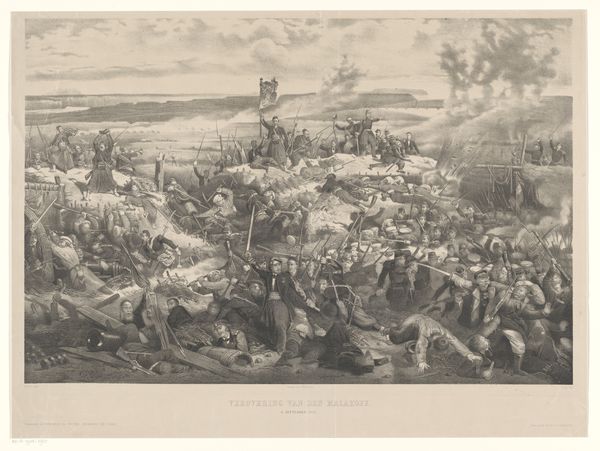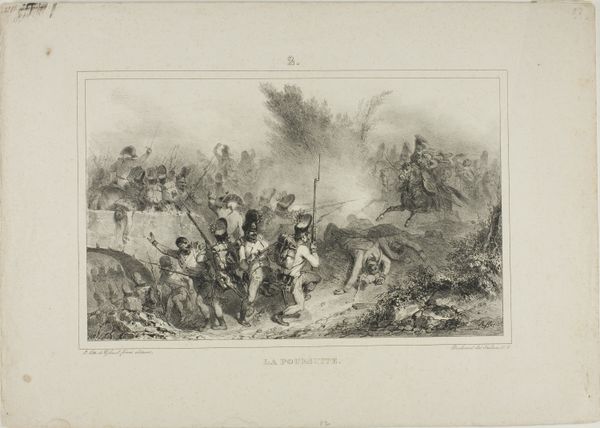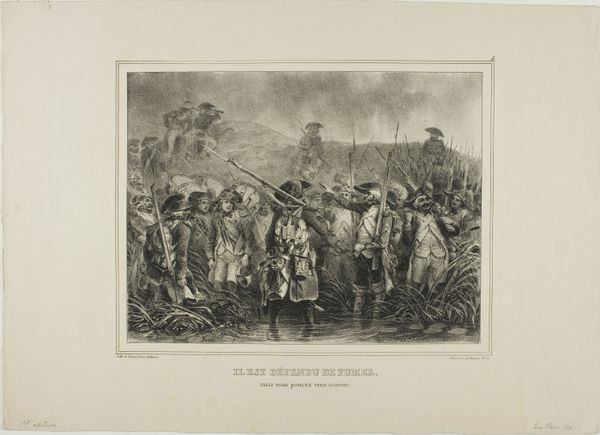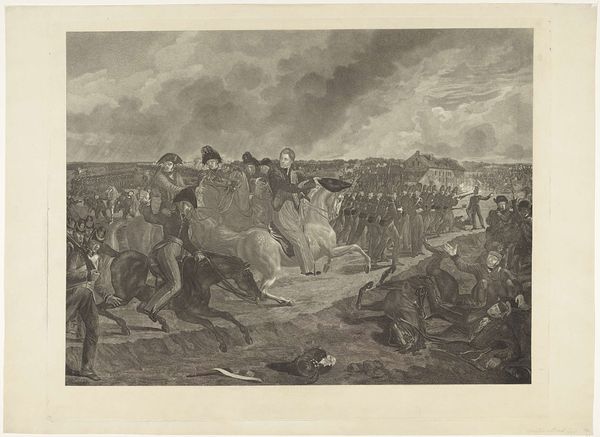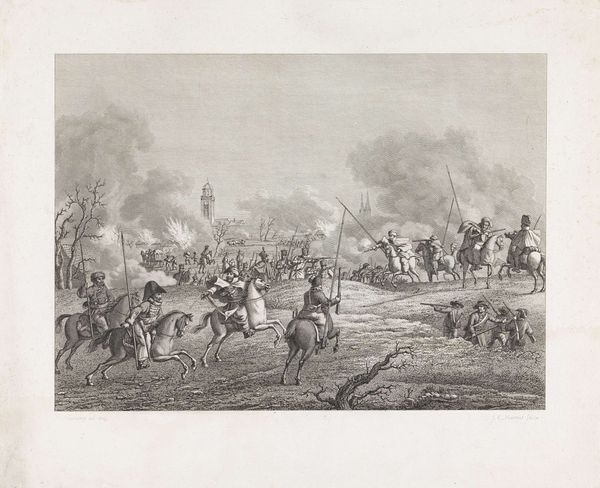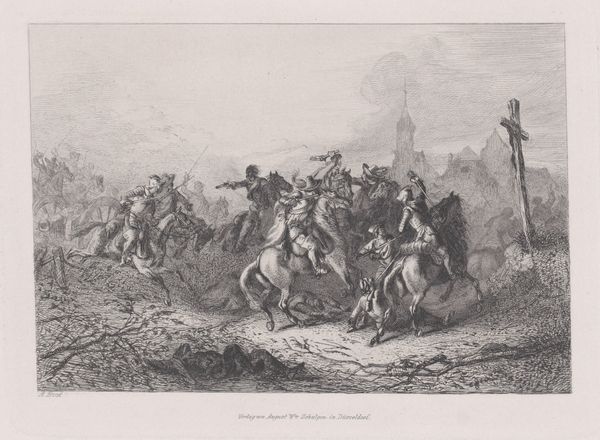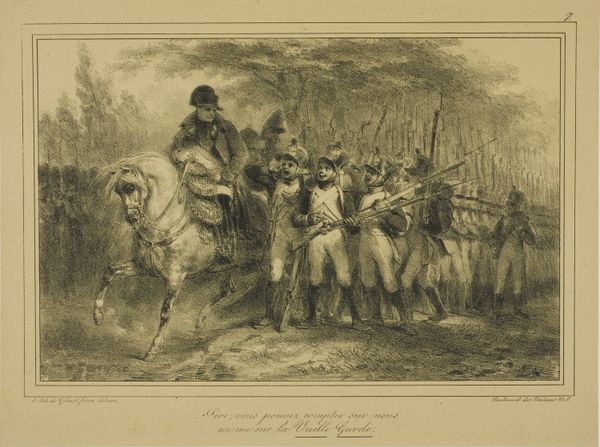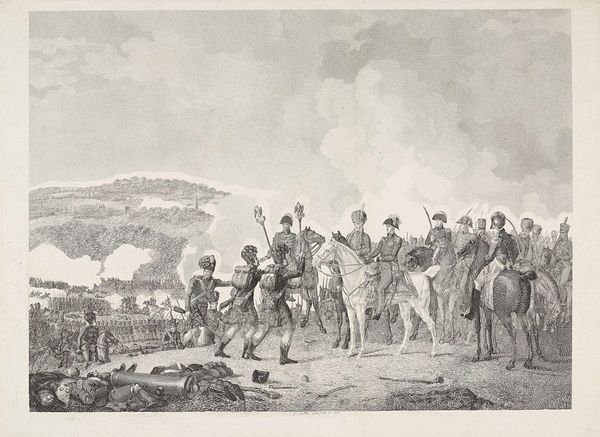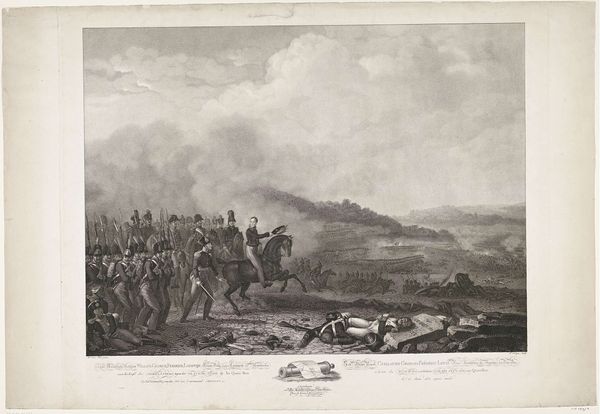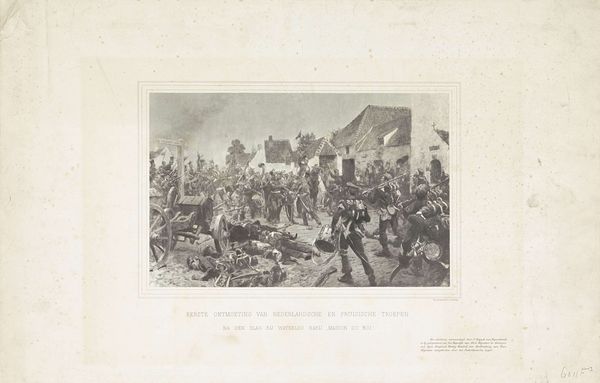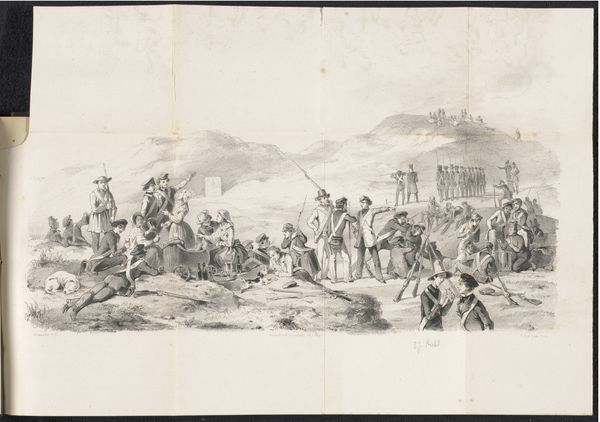
print, engraving
#
neoclacissism
#
narrative-art
# print
#
old engraving style
#
landscape
#
genre-painting
#
history-painting
#
engraving
Dimensions: height 577 mm, width 768 mm
Copyright: Rijks Museum: Open Domain
Editor: So, here we have "Prins Frederik raakt gewond bij Wervik, 1793", made between 1793 and 1795 by Christian Forssell. It’s an engraving, full of chaotic energy. What do you see in this piece, beyond the obvious battle scene? Curator: Beyond the battle itself, I see a careful construction of power and trauma. Consider the moment it captures: Prince Frederik's injury. This print, produced during a time of immense social upheaval in Europe, frames personal sacrifice within a narrative of national identity. Who benefits from representing the Prince in this way, and what political messages are being encoded through this image? Editor: That's interesting. It feels like it's glorifying war, almost? Curator: Indeed, but who is this glorification for? The intended audience plays a key role in deciphering this. Was it meant to rally support for the Dutch cause? Did it serve to consolidate power among the ruling elite by portraying them as valiant protectors of the nation? And how does the aesthetic – its Neoclassical composition, reminiscent of grand history painting – contribute to these ideological aims? Editor: So it’s not just a historical record, it’s actively shaping perception? Curator: Precisely. It is also crucial to acknowledge that images of war, like this one, often exclude or minimize the perspectives of those most vulnerable in conflict. Consider those in the lower portion of the engraving, seemingly injured, what does it tell us? Where are their stories within this dominant narrative of heroism? What does this representation elide about the realities of warfare? Editor: I hadn't really considered it in terms of who it’s *for*. That changes everything. Curator: It's about understanding the visual strategies that reinforce certain power structures. Examining art through the lens of social and historical context unveils these hidden dialogues and complexities. Editor: Thanks, I’ll definitely think about that approach from now on!
Comments
No comments
Be the first to comment and join the conversation on the ultimate creative platform.
